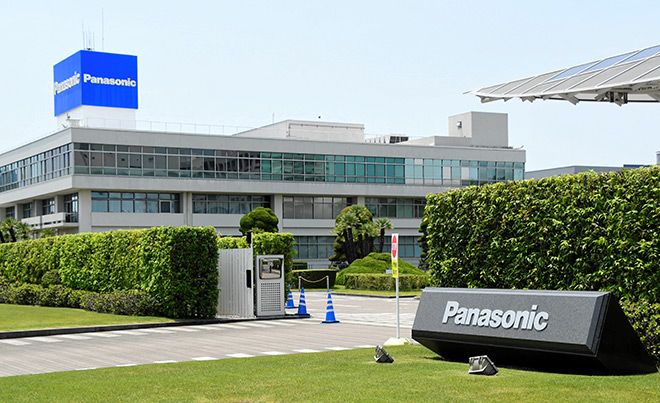


Panasonic Holdings Corp. is considering selling or scaling back its struggling television business and other less profitable divisions, a top Panasonic official announced on Feb. 4.
President Yuki Kusumi said at an online management briefing that four underperforming businesses―TVs, kitchen appliances, industrial devices and mechatronics―are facing low profitability and unclear growth prospects.
He said the company would take “drastic measures” by the end of fiscal 2026, including withdrawing from certain businesses or markets, discontinuing products and transferring operations to more suitable owners.
Panasonic Holdings also announced that it will encourage employees to take early retirement within fiscal 2025 as part of its efforts to improve management efficiency.
The company’s earnings forecast for the fiscal year ending in March 2025 projects sales of 8.3 trillion yen ($54 billion), a 2 percent decline from the previous fiscal year.
Operating profit is expected to rise 5 percent to 380 billion yen, while net profit is forecast to drop 30 percent to 310 billion yen.
FORMER FLAGSHIP BUSINESS
Panasonic has a storied history in the TV industry, dating to 1952 when its predecessor, Matsushita Electric Industrial Co., launched its first black-and-white cathode-ray tube television.
It introduced color televisions in 1960, helping drive the widespread adoption of TVs in Japan.
In 2003, when terrestrial digital broadcasting began, Matsushita Electric Industrial launched its Viera flat-screen TV line equipped with plasma and LCD screens.
Confident in the future of plasma technology, the company made significant investments in panel factories and other related facilities.
However, facing tough competition from LCD TVs, Panasonic was forced to shift its strategy.
The company ended its plasma TV business in 2014.
Even after that, it continued to face intense competition from Chinese and other overseas manufacturers, keeping it in a difficult position.
RESHAPING PORTFOLIO
Kusumi said at the online briefing that investments in key areas, such as automotive batteries, have yet to generate sufficient returns and stressed the need for structural reforms.
Regarding its TV business, he said that no companies have expressed interest in buying it so far, but Panasonic Holdings is considering various options.
The company plans to focus on its “solution business,” which includes competitive sectors such as in-flight entertainment and communication systems, energy storage and enterprise IT services.
It plans to streamline its headquarters and back-office operations, aiming to improve profitability by at least 150 billion yen by fiscal 2026.
Panasonic Holdings also said that it plans to dissolve its Panasonic Corp., which manages home appliances, air conditioning and lighting, within fiscal 2025.
It will reorganize Panasonic Corp. into three separate companies, including one named “Smart Life,” which will focus on home appliances.
Whether the name “Panasonic” will remain with these three new entities is still under discussion.
JAPAN’S TV INDUSTRY IN DECLINE
Panasonic’s declining presence in the sector is also evident in market share data.
According to BCN Research, Panasonic held the No. 2 spot in Japan’s flat-screen TV sales in 2018 with a 16.8 percent share, but in 2024, the figure had nearly halved to 8.8 percent, placing it sixth.
The market is now dominated by foreign-owned companies, with Tvs Regza Corp., a subsidiary of China’s Hisense Group Co., leading at 25.4 percent.
It was followed by Sharp Corp., owned by Taiwan’s Hon Hai Precision Industry Co., at 20.6 percent and Hisense itself at 15.7 percent.
“With rising prices in recent years, consumers have been opting for more affordable TVs, allowing overseas manufacturers to gain a stronger foothold in the market,” said Eiji Mori, a BCN Research analyst.
In recent years, major Japanese electronics companies have been withdrawing from the TV business in succession.
In 2018, Toshiba Corp. sold its TV business to Hisense. The same year, Hitachi Ltd. also exited the domestic TV market.
In 2021, Mitsubishi Electric Corp. ended shipments to major retailers, effectively withdrawing from the market.
As of now, only three companies―Panasonic, Sharp and Sony Group Corp.―continue to manufacture and sell their own TVs.
Panasonic has scaled down its TV business in recent years, including outsourcing production to other companies.
Last spring, Sharp announced the closure of its Sakai plant, ending domestic LCD panel production for televisions in Japan.